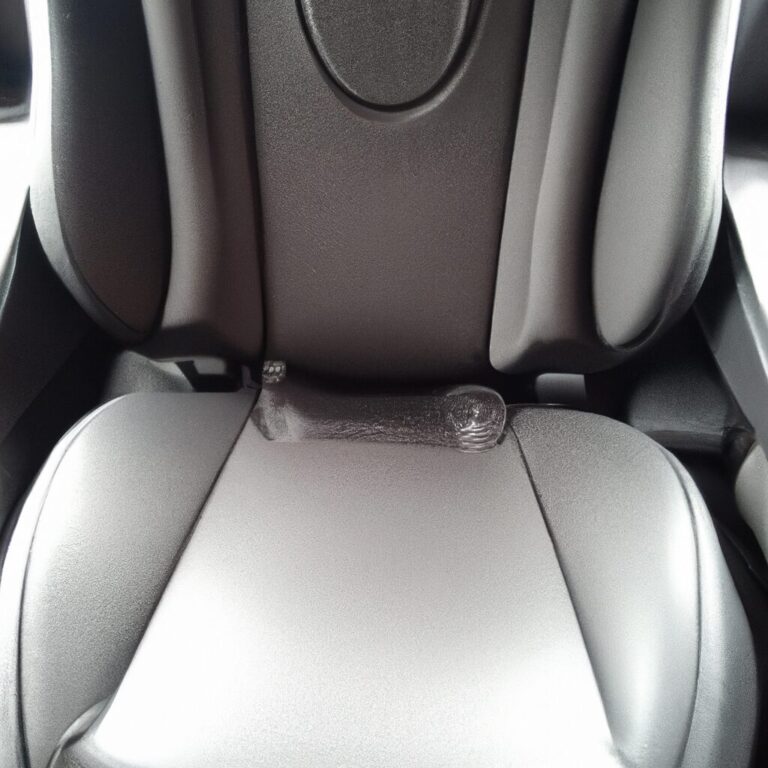what does a brake vacuum pump do
Introduction
A brake vacuum pump is an essential component of a vehicle’s braking system. It is responsible for providing the necessary vacuum pressure to the brake booster, which in turn helps to reduce the amount of effort needed to press the brake pedal. The brake vacuum pump is powered by the engine and helps to ensure that the brakes are working properly and efficiently. Without a brake vacuum pump, the brakes would not be able to function properly and the vehicle would be unsafe to drive.
How a Brake Vacuum Pump Works to Improve Braking Performance
A brake vacuum pump is a device that is used to improve the braking performance of a vehicle. It works by creating a vacuum in the brake system, which increases the pressure of the brake fluid and helps to improve the braking power of the vehicle.
The brake vacuum pump is connected to the intake manifold of the engine, and it uses the vacuum created by the engine to draw air out of the brake system. This creates a vacuum in the brake system, which increases the pressure of the brake fluid. This increased pressure helps to improve the braking power of the vehicle, as it allows the brakes to be applied more quickly and with greater force.
The brake vacuum pump is an important component of the braking system, as it helps to ensure that the brakes are able to respond quickly and effectively when they are needed. Without the brake vacuum pump, the brakes would be less responsive and would take longer to apply. This could lead to dangerous situations, as the brakes would not be able to respond quickly enough to stop the vehicle in time.
The brake vacuum pump is also important for maintaining the performance of the brakes over time. As the brake fluid is constantly being used, it can become contaminated with dirt and debris. This can reduce the effectiveness of the brakes, as the dirt and debris can interfere with the flow of the brake fluid. The brake vacuum pump helps to keep the brake fluid clean, which helps to maintain the performance of the brakes.
Overall, the brake vacuum pump is an important component of the braking system, as it helps to improve the braking performance of the vehicle. It works by creating a vacuum in the brake system, which increases the pressure of the brake fluid and helps to improve the braking power of the vehicle. This increased pressure helps to ensure that the brakes are able to respond quickly and effectively when they are needed, and it also helps to maintain the performance of the brakes over time.
The Benefits of Installing a Brake Vacuum Pump
Installing a brake vacuum pump is a great way to improve the performance of your vehicle’s braking system. A brake vacuum pump is a device that helps to create a vacuum in the brake system, which helps to increase the braking power of the vehicle. This is especially beneficial for vehicles that are used in high-performance applications, such as racing or off-roading.
The primary benefit of installing a brake vacuum pump is increased braking power. By creating a vacuum in the brake system, the brakes are able to apply more force to the brake pads, resulting in increased stopping power. This is especially beneficial for vehicles that are used in high-performance applications, as it allows them to stop more quickly and safely.
Another benefit of installing a brake vacuum pump is improved fuel efficiency. By creating a vacuum in the brake system, the brakes are able to apply more force to the brake pads, resulting in less drag on the vehicle. This reduces the amount of fuel needed to move the vehicle, resulting in improved fuel efficiency.
Finally, installing a brake vacuum pump can also help to reduce brake noise. By creating a vacuum in the brake system, the brakes are able to apply more force to the brake pads, resulting in less noise when the brakes are applied. This can be especially beneficial for vehicles that are used in high-performance applications, as it can help to reduce the amount of noise that is produced when the brakes are applied.
Overall, installing a brake vacuum pump is a great way to improve the performance of your vehicle’s braking system. By creating a vacuum in the brake system, the brakes are able to apply more force to the brake pads, resulting in increased stopping power, improved fuel efficiency, and reduced brake noise. If you are looking for a way to improve the performance of your vehicle’s braking system, installing a brake vacuum pump is a great option.
Common Problems with Brake Vacuum Pumps and How to Fix Them
Brake vacuum pumps are an important component of a vehicle’s braking system. They are responsible for providing the necessary vacuum pressure to the brake booster, which in turn helps to reduce the amount of effort needed to press the brake pedal. Unfortunately, brake vacuum pumps can sometimes malfunction, leading to a variety of problems. In this article, we will discuss some of the most common problems associated with brake vacuum pumps and how to fix them.
One of the most common problems with brake vacuum pumps is a leak. This can be caused by a variety of factors, including a worn or damaged seal, a loose connection, or a cracked or broken hose. To fix this problem, you will need to inspect the pump and its connections for any signs of damage or wear. If any are found, they should be replaced. Additionally, you should check the hoses for any signs of cracking or splitting, and replace them if necessary.
Another common problem with brake vacuum pumps is a lack of vacuum pressure. This can be caused by a variety of factors, including a clogged filter, a faulty check valve, or a worn or damaged diaphragm. To fix this problem, you will need to inspect the pump and its components for any signs of damage or wear. If any are found, they should be replaced. Additionally, you should check the filter for any signs of clogging, and replace it if necessary.
Finally, brake vacuum pumps can sometimes become noisy. This can be caused by a variety of factors, including a worn or damaged bearing, a loose connection, or a faulty check valve. To fix this problem, you will need to inspect the pump and its components for any signs of damage or wear. If any are found, they should be replaced. Additionally, you should check the connections for any signs of looseness, and tighten them if necessary.
In conclusion, brake vacuum pumps can sometimes malfunction, leading to a variety of problems. The most common problems include leaks, a lack of vacuum pressure, and noise. To fix these problems, you will need to inspect the pump and its components for any signs of damage or wear, and replace them if necessary. Additionally, you should check the hoses, filter, and connections for any signs of damage or looseness, and replace or tighten them if necessary.
How to Diagnose a Faulty Brake Vacuum Pump
A brake vacuum pump is an important component of a vehicle’s braking system. It is responsible for providing the necessary vacuum pressure to the brake booster, which in turn helps to reduce the amount of effort needed to press the brake pedal. If the brake vacuum pump is not functioning properly, it can lead to a decrease in braking performance and even cause the brakes to fail. Therefore, it is important to diagnose a faulty brake vacuum pump as soon as possible.
The first step in diagnosing a faulty brake vacuum pump is to check the vacuum hose for any signs of damage or wear. If the hose is cracked, torn, or otherwise damaged, it should be replaced immediately. Additionally, the hose should be checked for any blockages or obstructions that could be preventing the vacuum pressure from reaching the brake booster.
The next step is to check the vacuum pump itself. If the pump is not functioning properly, it may be due to a lack of power or a faulty electrical connection. To check the power, use a multimeter to measure the voltage at the pump. If the voltage is too low, the pump may need to be replaced. Additionally, check the electrical connections to ensure that they are secure and free of corrosion.
Finally, inspect the vacuum pump for any signs of leakage. If there is a leak, it could be due to a faulty seal or gasket. If the leak is severe, the pump may need to be replaced.
By following these steps, you can diagnose a faulty brake vacuum pump and take the necessary steps to repair or replace it. Doing so will help to ensure that your vehicle’s brakes are functioning properly and that you are able to safely stop your vehicle when needed.
The Different Types of Brake Vacuum Pumps and Their Uses
Brake vacuum pumps are an essential component of a vehicle’s braking system. They are responsible for providing the vacuum pressure needed to power the brakes. Without a brake vacuum pump, the brakes would not be able to function properly. There are several different types of brake vacuum pumps available, each with its own unique purpose and use.
The most common type of brake vacuum pump is the diaphragm pump. This type of pump uses a diaphragm to create a vacuum pressure. The diaphragm is connected to a piston, which is then connected to a vacuum line. When the piston moves, it creates a vacuum pressure that is used to power the brakes. Diaphragm pumps are typically used in vehicles with manual transmissions.
Another type of brake vacuum pump is the rotary vane pump. This type of pump uses a rotating vane to create a vacuum pressure. The vane is connected to a shaft, which is then connected to a vacuum line. When the shaft rotates, it creates a vacuum pressure that is used to power the brakes. Rotary vane pumps are typically used in vehicles with automatic transmissions.
The third type of brake vacuum pump is the centrifugal pump. This type of pump uses a spinning impeller to create a vacuum pressure. The impeller is connected to a shaft, which is then connected to a vacuum line. When the shaft spins, it creates a vacuum pressure that is used to power the brakes. Centrifugal pumps are typically used in vehicles with all-wheel drive systems.
No matter what type of brake vacuum pump is used, it is important to ensure that it is properly maintained and serviced. Regular maintenance and servicing will help to ensure that the pump is functioning properly and providing the necessary vacuum pressure to power the brakes. Without proper maintenance, the brakes may not be able to function properly, leading to potential safety issues.
How to Maintain a Brake Vacuum Pump for Optimal Performance
Maintaining a brake vacuum pump is essential for optimal performance. Proper maintenance will ensure that the pump is working correctly and efficiently. Here are some tips for maintaining a brake vacuum pump:
1. Check the oil level regularly. The oil should be changed every 3,000 miles or every 6 months, whichever comes first. Make sure to use the correct type of oil for your pump.
2. Check the hoses and connections for any signs of wear or damage. Replace any worn or damaged parts as soon as possible.
3. Check the vacuum level regularly. The vacuum level should be between 18 and 22 inches of mercury. If the vacuum level is too low, it could indicate a problem with the pump or the hoses.
4. Check the belt tension regularly. The belt should be tight enough to prevent slipping, but not so tight that it causes excessive wear on the belt or the pulleys.
5. Clean the pump regularly. Use a soft brush and a mild detergent to remove any dirt or debris that may have accumulated on the pump.
6. Inspect the pump for any signs of wear or damage. If any parts are worn or damaged, replace them as soon as possible.
By following these tips, you can ensure that your brake vacuum pump is working correctly and efficiently. Regular maintenance will help to extend the life of your pump and keep it running at peak performance.
The Advantages of Upgrading to a High-Performance Brake Vacuum Pump
Upgrading to a high-performance brake vacuum pump can provide a number of advantages for vehicle owners. This type of pump is designed to provide a more efficient and reliable braking system, which can help to improve the overall safety of a vehicle. Here are some of the key benefits of upgrading to a high-performance brake vacuum pump.
First, a high-performance brake vacuum pump can provide improved braking power. This type of pump is designed to generate more vacuum pressure than a standard pump, which can help to increase the amount of braking force that is applied to the brakes. This can help to reduce the amount of time it takes for the brakes to stop the vehicle, which can be especially beneficial in emergency situations.
Second, a high-performance brake vacuum pump can help to reduce the amount of wear and tear on the brakes. This type of pump is designed to generate a more consistent vacuum pressure, which can help to reduce the amount of friction that is generated between the brake pads and the rotors. This can help to extend the life of the brakes, which can save vehicle owners money in the long run.
Finally, a high-performance brake vacuum pump can help to improve the overall performance of the vehicle. This type of pump is designed to generate a more consistent vacuum pressure, which can help to improve the overall responsiveness of the brakes. This can help to improve the overall handling of the vehicle, which can be beneficial for both everyday driving and performance driving.
Overall, upgrading to a high-performance brake vacuum pump can provide a number of advantages for vehicle owners. This type of pump is designed to provide improved braking power, reduce wear and tear on the brakes, and improve the overall performance of the vehicle. For these reasons, upgrading to a high-performance brake vacuum pump can be a great investment for any vehicle owner.
How to Choose the Right Brake Vacuum Pump for Your Vehicle
When it comes to choosing the right brake vacuum pump for your vehicle, there are several factors to consider. The most important factor is the type of vehicle you have. Different vehicles require different types of brake vacuum pumps, so it is important to make sure you select the right one for your vehicle.
The next factor to consider is the size of the brake vacuum pump. Different vehicles require different sizes of pumps, so it is important to make sure you select the right size for your vehicle. The size of the pump will determine the amount of vacuum it can produce, so it is important to make sure you select the right size for your vehicle.
The third factor to consider is the type of brake system your vehicle has. Different brake systems require different types of brake vacuum pumps, so it is important to make sure you select the right type for your vehicle.
The fourth factor to consider is the type of engine your vehicle has. Different engines require different types of brake vacuum pumps, so it is important to make sure you select the right type for your vehicle.
Finally, it is important to consider the cost of the brake vacuum pump. Different pumps can vary in price, so it is important to make sure you select the right one for your budget.
By considering all of these factors, you can ensure that you select the right brake vacuum pump for your vehicle. It is important to make sure you select the right one for your vehicle, as it can have a significant impact on the performance of your vehicle.
Q&A
1. What is a brake vacuum pump?
A brake vacuum pump is a device that is used to create a vacuum in the brake system of a vehicle. This vacuum is used to help the brakes work more efficiently and to reduce the amount of effort needed to apply the brakes.
2. How does a brake vacuum pump work?
A brake vacuum pump works by drawing air out of the brake system, creating a vacuum. This vacuum helps to reduce the amount of effort needed to apply the brakes, as well as helping to ensure that the brakes are working efficiently.
3. What are the benefits of using a brake vacuum pump?
The main benefit of using a brake vacuum pump is that it helps to reduce the amount of effort needed to apply the brakes. This can help to improve the overall performance of the brakes, as well as helping to reduce the amount of wear and tear on the brake system.
4. What types of vehicles use a brake vacuum pump?
A brake vacuum pump is typically used in vehicles with a hydraulic brake system. This includes cars, trucks, and other vehicles with a hydraulic brake system.
5. How often should a brake vacuum pump be replaced?
The frequency of replacement for a brake vacuum pump will depend on the type of vehicle and the amount of use it gets. Generally, it is recommended that a brake vacuum pump be replaced every two to three years.
6. What are the signs that a brake vacuum pump needs to be replaced?
The most common signs that a brake vacuum pump needs to be replaced are a decrease in braking performance, an increase in the amount of effort needed to apply the brakes, and a decrease in the amount of vacuum in the brake system.
7. Are there any risks associated with using a brake vacuum pump?
Yes, there are some risks associated with using a brake vacuum pump. These include the risk of over-pressurizing the brake system, which can lead to brake failure, as well as the risk of creating a vacuum that is too strong, which can lead to brake failure.
8. How can I tell if my brake vacuum pump is working properly?
The best way to tell if your brake vacuum pump is working properly is to have it inspected by a qualified mechanic. They will be able to check the vacuum level and make sure that the pump is functioning correctly.
Conclusion
In conclusion, a brake vacuum pump is an essential component of a vehicle’s braking system. It helps to create the vacuum necessary for the brakes to work properly, allowing the driver to stop the vehicle safely and quickly. Without a brake vacuum pump, the brakes would not be able to function properly, leading to a dangerous situation.





